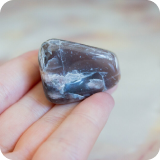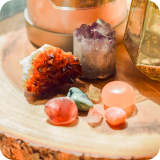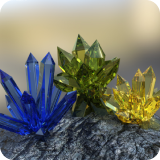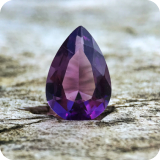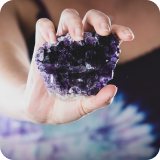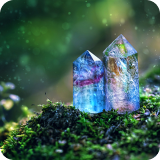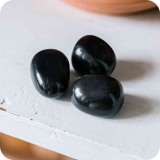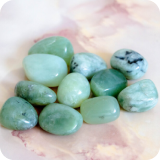- History of Fake Crystals
- 5 Most Common Fake Crystals
- 6 Ways to Tell if a Crystal is Fake
- Tips to Avoid Fake Crystals
- FAQs
- Spot Fake Crystals Like a Pro!
Crystals have risen in popularity over the last decade or so, with many of us turning to these gifts of nature to enhance our spiritual and emotional well-being. However, because of their popularity, many manufacturers make fake crystals and sell them as genuine.
There is no doubt that you have some beautiful crystals in your collection, but have you ever taken a moment to check if they are genuine or not? It may seem like a huge task, but you don’t need a geology degree to figure it out (most of the time.) We have some top tips for you on fake crystals and how to identify them, so let’s dive in!
How can you tell if a crystal is fake? There are several ways you can tell if a crystal is artificial, including the colors it exhibits, inclusions, and hardness. We will guide you through the different tests you can do to distinguish between real and fake crystals.
History of Fake Crystals
Fake crystals are everywhere right now, especially with the rise of online purchasing. But artificial crystals have appeared throughout history, with jewelers using glass instead of Diamonds, Rubies, or Emeralds. Because these crystals are popular and expensive, less than honest folks have always tried to imitate these stones to make a quick buck.
However, people didn’t just create imitations of cardinal gemstones. Merchants in the 18th century painted glass black to sell as Jet and developed opaline paste to use over foil to create fake Opals.
Today, we see many healing crystals being faked and sold to us as genuine, with a range of ways of faking them. We have created a table for you of the most commonly faked crystals and how you can tell if they are real.
| Crystal | How to Check Authenticity |
| Clear Quartz | Signs of inclusions and distortion when looked through. |
| Jade | Heavy and cold to the touch with inclusions. |
| Amethyst | Different shades of purple and inclusions. |
| Pink Quartz | A cloudy appearance and imperfect inclusions. |
| Smoky Quartz | Dark inclusions on the inside of the crystal. |
| Citrine | Subtle, even lemon-yellow color. |
| Turquoise | Greenish or pale blue with a webbing matrix. |
| Moonstone | Iridescent look with flicks of light inside the crystal. |
| Malachite | Intricate non-uniform patterns with soft lines. |
| Moldavite | Deep green color with inclusions. |
5 Most Common Fake Crystals
To feel confident buying and using gemstones, knowing how to tell if a crystal is fake is essential. So, what are the different ways crystals are faked, and how can you spot them?
Synthetic
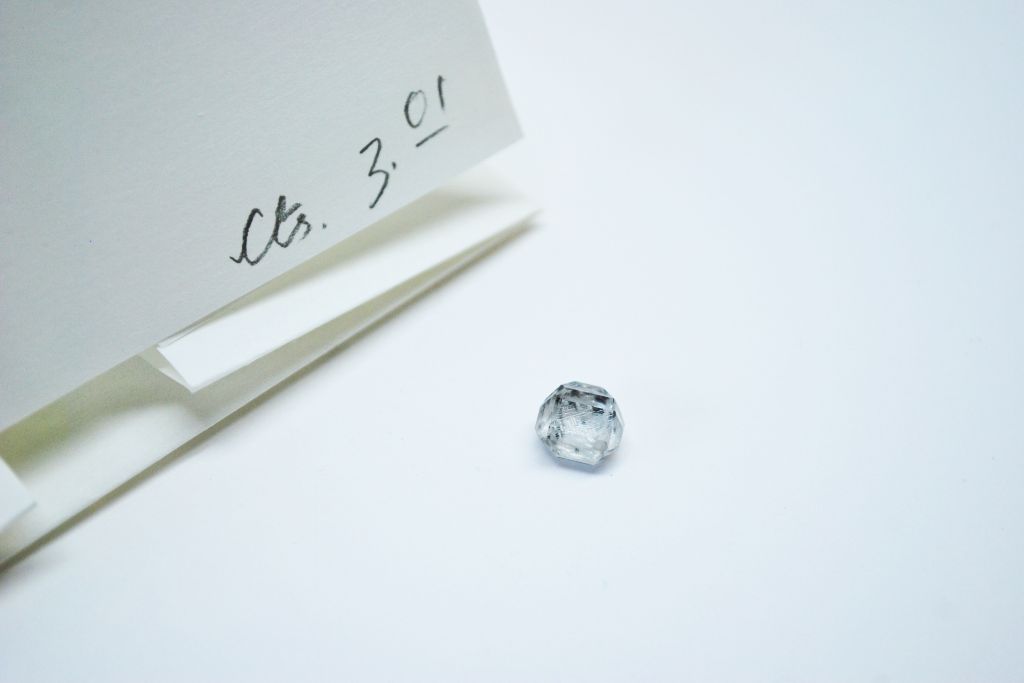
Synthetic crystals often appear in commercial jewelry and refer to lab-grown gemstones that are created in various ways by working with the chemical composition of the minerals. In the crystal world, there is a lot of discussion regarding whether synthetic crystals are classed as fake or not and if they hold the same metaphysical powers. These crystals don’t come from the natural world, but there are ethical and cost reasons to opt for synthetic over natural.
If you are wondering if the crystal you have is synthetic or natural, you can examine the stone for inclusions or flaws. Most natural stones have imperfections and an uneven luster, whereas synthetic crystals are more uniform. Furthermore, the colors of synthetic stones are usually bright and vivid because of their lack of inclusions.
Dyed
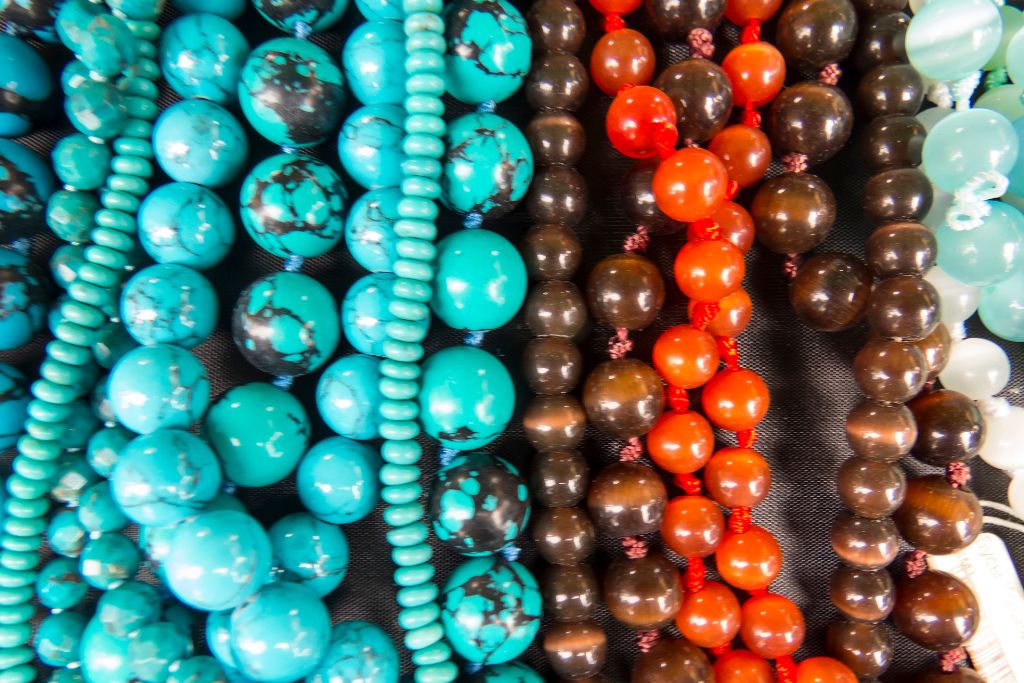
Natural crystals are sometimes dyed and sold as different gemstones, usually for a higher price and under the name of a more sought-after crystal. Clear Quartz is often dyed pink and sold as Rose Quartz, and Howlite is commonly dyed and sold as Turquoise. Furthermore, many retailers sell dyed Agate in a range of bright but unnatural colors.
Your common sense is your best friend when determining if your crystal is dyed. If your Agate crystal looks too bright, it is probably dyed. Furthermore, if you examine the crystal and see darker shades in the cracks and lines, it suggests that it is dyed.
Treated
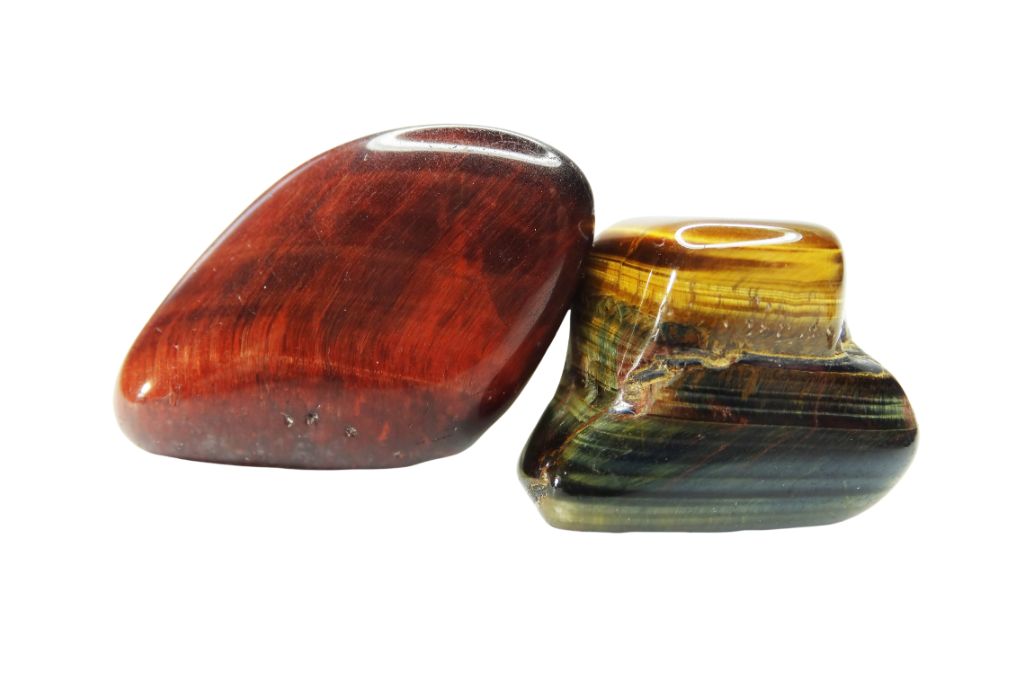
An extremely common treatment in the crystal world is heat treatment. So many heat-treated Amethysts are sold as Citrine, even in reputable stores! Heat-treated Amethyst stones sold as Citrine usually have a yellowish or white bottom with a dark, burnt orange color at the top. In contrast, natural Citrine crystals have an even, subtle yellow hue.
Tiger’s Eye is another crystal that is often heat treated to enhance its color, with the heat causing it to turn a deep shade of red. Most gemstones sold as Red Tiger’s Eye are heat-treated as this color is rare in the natural world. However, as it is Tiger’s Eye, its metaphysical powers are still the same.
Coated
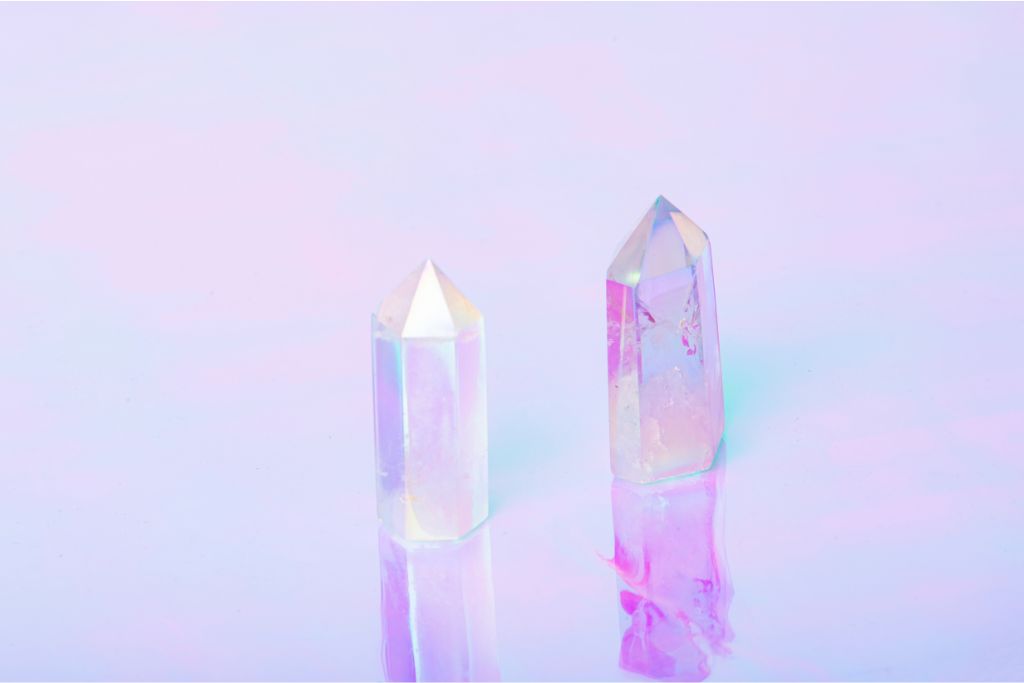
Coated crystals refer to gemstones or glass that have been treated in a laboratory to enhance their look. A common type of treatment is the aura coating, where crystals are coated with a thin layer of metal to create an iridescent or colorful glow.
More often than not, these crystals are sold as synthetic, coated crystals, and the sellers are open about the treatment the gemstones have received. For example, Angel Aura Quartz is a name that refers to natural Quartz crystals that have this treatment.
Glass Imitations
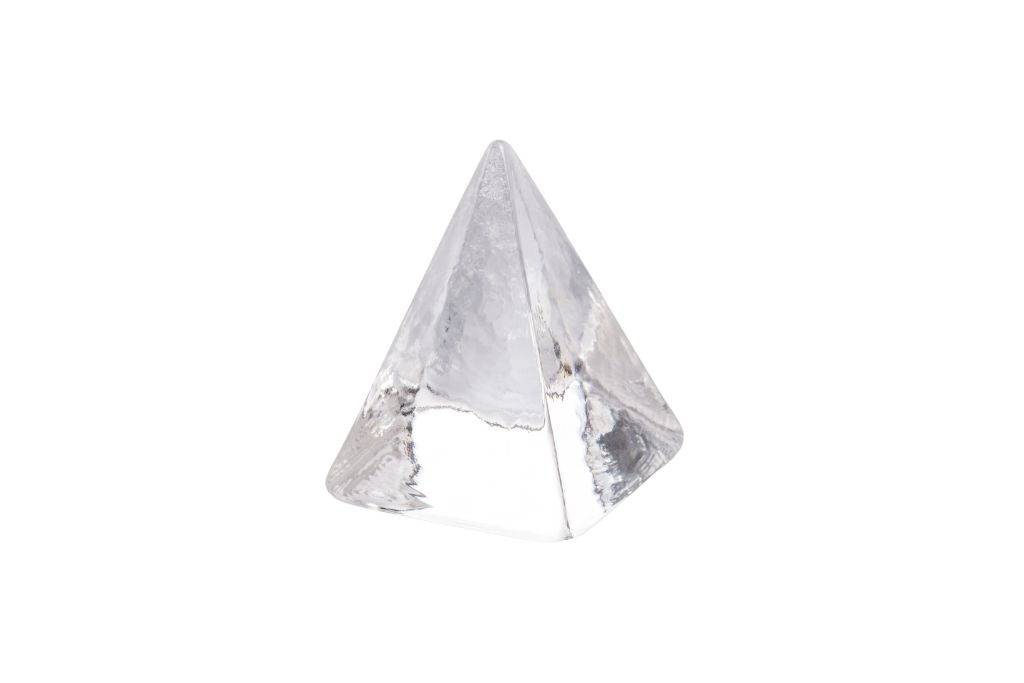
Glass imitation fake crystals are probably the most disappointing, as these fakes are usually sold as natural. Manufacturers create fake glass imitations of loads of your favorite healing crystals, from Clear Quartz to Malachite.
Thankfully, there are various tests you can do to tell if your crystal is real or glass. Examining the color and inclusions and performing a heat or hardness test will help you figure out what your crystal is made of.
6 Ways to Tell if a Crystal is Fake
Crystals are faked in different ways, but we want to empower you and help you discover the truth about your gemstone collection! So, how can you tell if a crystal is fake from the comfort of your home?
Color
Natural crystals usually have a range of colors within them, caused by their impurities, whereas synthetic ones tend to be uniform and vivid in color. Natural stones have color zoning within them, which creates different hues, and this cannot easily be recreated. The color inclusions and zoning are often pretty easy to see with the naked eye, especially in stones like Amethyst and Smoky Quartz.
If your crystal is bright in color and has no range of colors, it may be fake. You can also tell if your crystal is dyed by examining its cracks to see if there are darker bits where the dye has gathered. If you are concerned about a specific crystal being faked, look at photos of natural specimens online and compare the colors you see.
Inclusions
Inclusions and impurities in crystals give them color, pattern, and intrigue, and they are very hard to recreate in a laboratory. If you have a translucent or semi-translucent gemstone, you can usually see specks, dots, or random patterns within it. This suggests it is genuine, as these irregular inclusions are unique to crystals.
However, you will never see air bubbles in natural crystals, but you will in glass or plastic fakes. You may need a magnifying glass to check for air bubbles, but some are pretty clear. Certain fake crystals have uniform patterns, such as fake Malachite, and this is a clear indicator that the specimen is not natural.
Hardness (Scratch Test)
Testing your crystal’s hardness using the Mohs scale is a great way to determine if it is genuine or fake. Glass is a five on the Mohs hardness scale, with many healing crystals, such as Quartz, being higher. So, if you scratch glass with your crystal, it should leave a mark, and not the other way around.
Of course, this test really depends on what crystal you have. Some crystals, such as Malachite and Selenite, have a lower hardness rating than glass. Always check the Mohs rating of your crystal before performing a scratch test.
Density (Weight Test)
Fake crystals are often lighter than natural ones because they are made out of glass, resin, or plastic. Because genuine crystals have dense minerals within them, they tend to be heavy. So, if your crystal feels lighter than your others, it may well be a fake.
Temperature (Touch Test)
Another easy way to distinguish between real and fake crystals is simply by touching them. Genuine gemstones are cold to the touch but warm up when you have held them for a while. On the other hand, fake crystals usually have the same temperature as the room.
Heat (Flame Test)
A flame test is easy to do at home, but always check if your crystal is heat resistant before testing it this way. Certain gemstones, such as Amethyst and Celestite, can be damaged by heat. It is crucial to always take safety precautions when doing this test.
This test involves using a lighter and a pair of tongs to hold the crystal. Bring the lighter to the crystal and see if your crystal warps, dribbles, or creates smells after a few moments. Natural crystals usually won’t get damaged from a few moments of heat, whereas fakes will.
Tips to Avoid Fake Crystals
What are our top tips to avoid fake crystals?
- Look at the name and origin of the crystal you wish to buy.
- If you are shopping in a store, pick up the crystal and feel its weight and temperature.
- Examine the stone for inclusions and unevenness.
- Shop at reputable retailers.
- Know the common price of the gemstone you wish to buy. Cheaper usually means fake.
- Research your crystal and its natural colors before buying.
- Know the commonly faked crystals and how they are faked.
FAQs
How Do You Know if Crystals are Fake?
You can find out if your crystal is faked by examining its color and inclusions and performing different tests, such as the hardness test.
Is It Okay to Have Fake Crystals?
It is okay to have fake crystals as long as you are aware that they are fake and know they may not hold the same metaphysical properties as real ones.
Do Fake Crystals Have the Same Powers as Natural Ones?
No, fake crystals do not have the same powers as natural ones.
Do Fake Crystals Melt?
Yes, fake crystals will melt when performing the flame test if they are made from plastic.
What is the Most Fake Crystal?
The most faked crystals include Jade, Rose Quartz, Malachite, and Citrine.
Spot Fake Crystals Like a Pro!
We hope this article has given you the knowledge and power to determine if the crystals in your collection are fake or not. By following these guidelines, you can discover the truth about your favorite gemstones.
And remember, listen to your gut. It is a saying as old as time, but if something seems too good to be true, it probably is. Whether this is a ridiculously cheap Turquoise or an Agate with a bold blue color, listen to your intuition and avoid them!
| Ways Crystals are Faked | Tests to Uncover the Fake |
| Synthetic | Color and Inclusions. |
| Dyed | Color and Heat Test. |
| Treated | Color |
| Coated | Color |
| Glass Imitations | Inclusions, Hardness Test, Density Test, Temperature Test, and Heat Test. |


